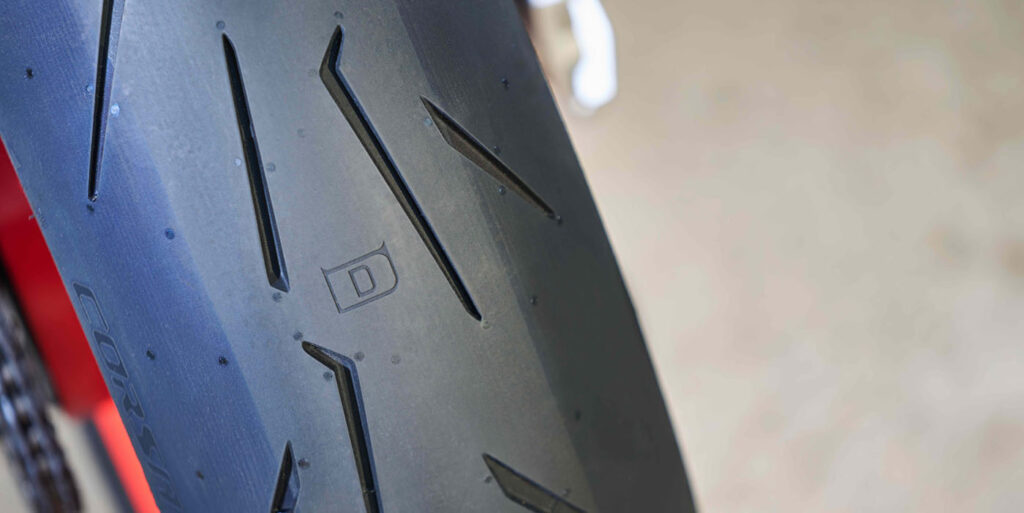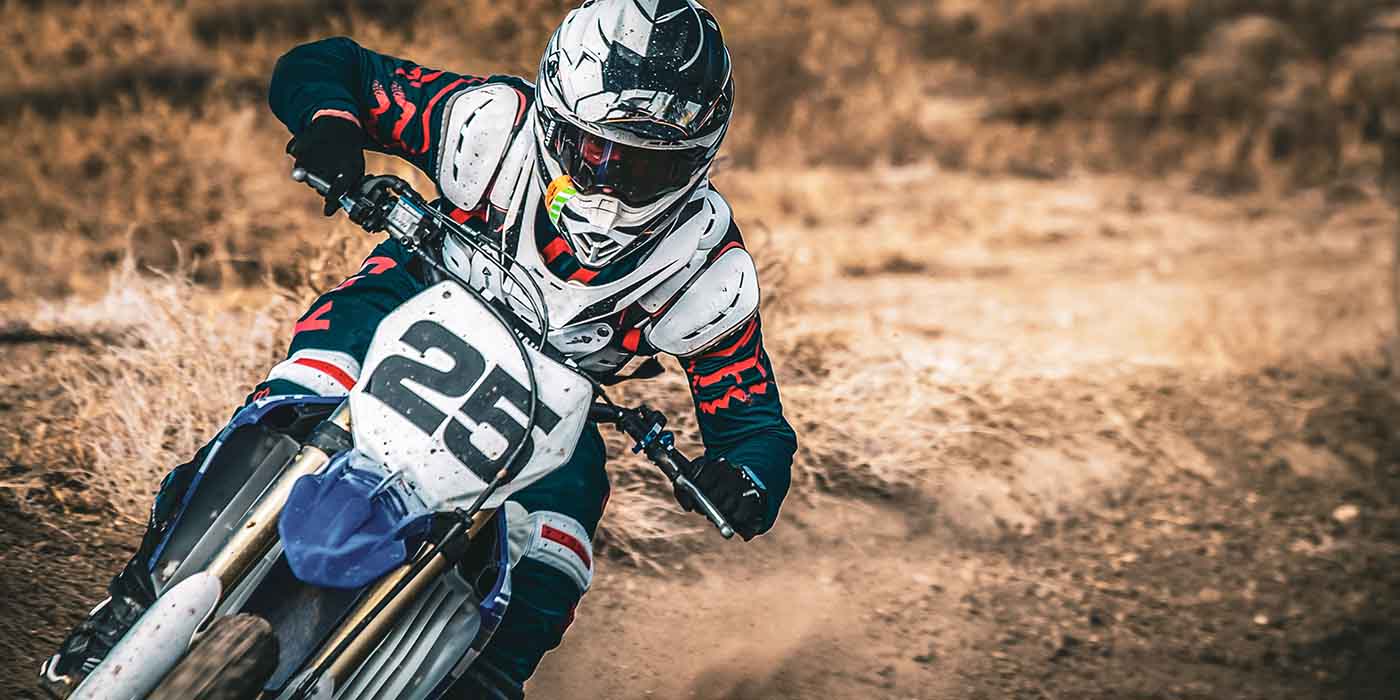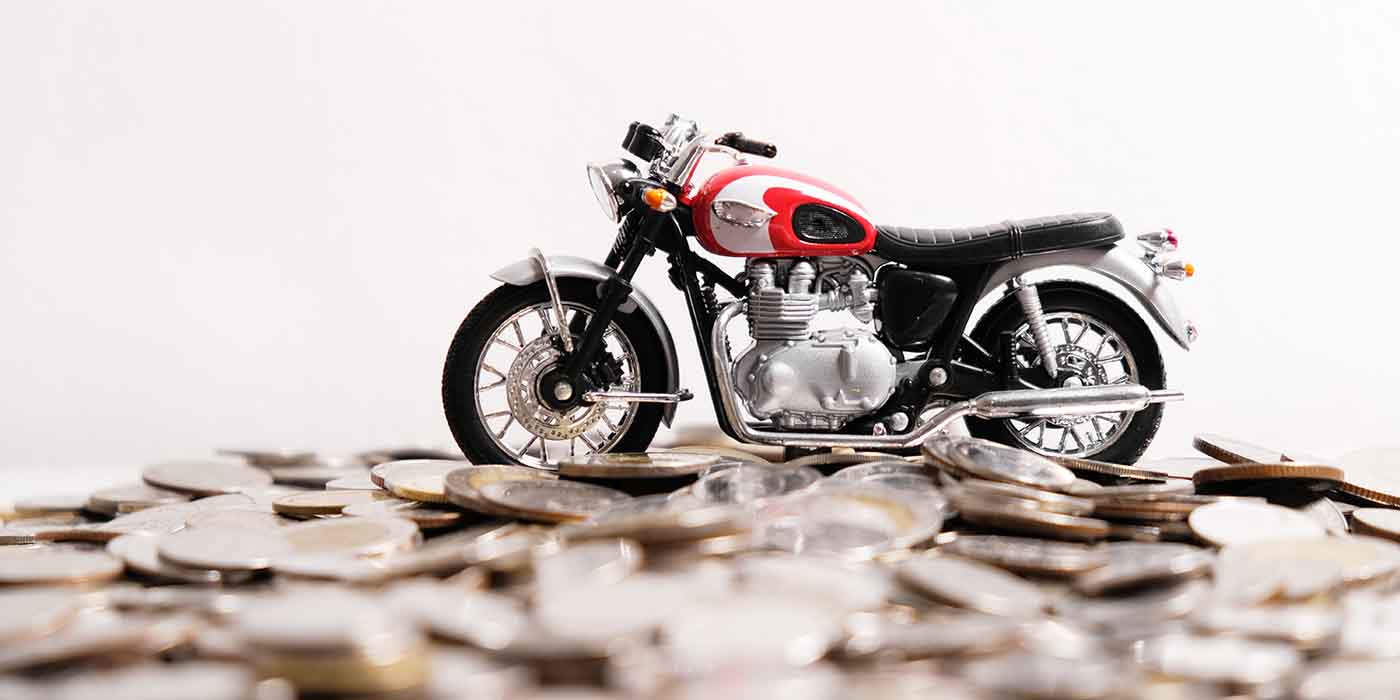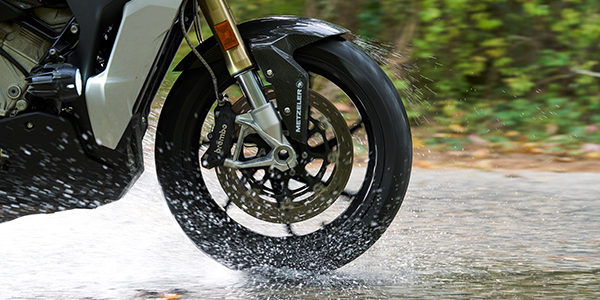Let’s face it: Tires are not the sexy part of a bike.
When customers are examining their next potential rides — or even looking over each others’ — they’ll gasp over engines, swoon over paintwork and moan over exhaust systems. But the tires? They don’t even merit a look. Dressed in basic black, they blend into the road or showroom floor. Our eyes tend to gloss over them, because except for some obvious differences in size or tread depth, all tires look largely the same to a casual viewer. On the surface, not much stands out to make a tire special.
And yet, tires are one of the most critical elements to a bike, because without them, you’re not going anywhere. And while an engine determines how much performance you can get from a bike, the condition and makeup of the tires determine just how long that performance lasts.
As Jared Williams, general manager of motorcycle products USA & Canada for Bridgestone Americas, and Andrew Decker, project engineer – sales engineering for Bridgestone Americas, say, “Tires are the only thing touching the ground on your bike. They transfer all the forces from the bike to the road and road surface characteristics back to the rider. Keep them in the best shape by using the proper inflation pressures, storing them correctly, and look them over often to make sure they are ready to ride.”
Materials and Tread Design
While automotive and motorcycle tires serve the same basic function — supporting and cushioning the wheels of a vehicle — they have very different makeups, since their nuanced purposes differ.
Williams and Decker note, “Motorcycle tires are designed to generate cornering forces when they lean, so the construction is not always the same from the center out to the shoulder. Automotive tires are designed to generate traction while standing mostly straight up. So, while they may have components that share the same name and general purpose, the design and construction approaches are very different.”
The makeup of a motorcycle tire affects how it grips surfaces, handles cornering, sheds moisture and enhances mileage, and manufacturers are continually conducting research and testing to broaden the performance ranges of their products as well as the scope of conditions in which riders can use them. “Anything from tread compound changes, small crown profile changes and even subtle tread pattern changes can have a dramatic effect on how a tire handles a certain type of terrain,” Williams and Decker explain.
Grip is perhaps the easiest aspect of tires to understand, because we can actually see it. Tread depth determines how well a tire can grip a surface. The deeper the tread, the better grip a tire has on rough, uneven surfaces. The smooth surface of race and cruising tires, which are made for flat, asphalt roads, is a marked contrast to the stubby treads of off-road types, which need to grip everything from dirt to sand to rocks. But you probably already knew that.
However, did you know that tread patterns play an equally important role in a tire’s grip? Tread patterns dictate how water will flow off a tire. According to Josh Whitmire, director of sales moto for Pirelli, motorcycle tires often use a specific tread pattern that “ensures consistent performance across various surfaces as well as the effective channeling of water away from the center of the tire.” While tread patterns differ from tire to tire, they can also become iconic and recognizable for each manufacturer.
When designing and selecting tread patterns, manufacturers must first consider the performance targets that have been set for the tire. If a tread pattern doesn’t meet those targets, it is eliminated from consideration. Some companies, Williams and Decker state, use proprietary simulation and measurement technology during this developmental phase. “This technology visualizes the contact behavior as it rolls across various lean angles and allows us to modify the design to reduce slip area, which improves both traction and improves wear life,” they explain.
The type of rubber used in a tire will also affect both its mileage and grip. Furthermore, perhaps contrary to popular belief, it’s not just one type of rubber being used across the whole tire — it’s a complex blend of different rubbers, both natural and synthetic.
Whitmire explains, “For example, a tire may feature three different rubber compounds across five different zones: The compound in the center of the tire is designed for higher mileage, whereas the compound on the shoulders of the tire is designed for maximum grip. When combined, the tire achieves an optimal mix of mileage and performance.”
Whitmire adds that tire manufacturers invest a lot of time, research and development to ensure that motorcycle tires are optimized for various applications. “This means certain rubber compounds (e.g. full silica) are specifically developed and incorporated into tires in strategic amounts and locations to get the highest level of performance out of the tire.”
Of course, it’s not just the makeup of the tire that affects its performance and life. The type of riding one does in addition to how one maintains the tires are critical factors as well. Stay tuned next week for tips on motorcycle tire care and maintenance.














